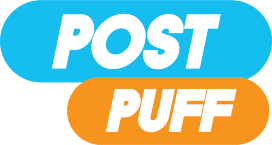Restaurateurs are scrambling to get a piece of the pie. They are trying to find ways to keep up with the changes in the industry that are happening at an exponential rate. The restaurant industry is changing rapidly, and restaurants cannot afford to be left behind. With more people having access to food delivery apps, it is becoming more difficult for restaurants to remain relevant.
Restaurant owners have started to implement new strategies to remain relevant in the market. For example, restaurants are now offering discounts during peak hours and cheaper items on their menus. With such a shift in the industry, it is imperative for restaurateurs to be able to present themselves as an option for consumers by presenting their food as healthy and with a personal touch.
Why Restaurateur Should Consider Using a Restaurant Delivery Software
With the growing popularity of online ordering, it comes as no surprise that restaurant delivery software has become a common practice. The benefits of using a restaurant delivery software include ease of use and cost effectiveness. It also helps restaurants with their marketing efforts and customer service. With the help of these apps, restaurants are able to offer more than just food.
In the restaurant delivery software industry, providers are primarily divided into three categories: those that provide a platform for restaurants to manage and take orders through their website, apps, and/or call centers; those that provide technology solutions for a specific type of business at a set price; and those that support any business by providing marketing services.
Delivery apps are built to provide a platform for restaurant owners to manage and take orders for their customers. The apps are quick and easy to implement, meaning that restaurants wouldn’t have to hire additional staff. Restaurants can also use the apps to indicate the number of units they need, as well as change prices for menu items in real time.
There is a number of delivery apps that offer different solutions. A few examples are:-
GrubHub: an online platform for restaurants to manage and take orders from customers through their website, apps, and/or call centers;
– Seamless: an online platform for delivery services—both restaurant and non-restaurant—to provide menus, order fulfillment, and payment processing;
– Munchery: an online platform for “meal deliveries” for restaurants to manage and take orders from customers through their website, apps, and/or call centers. The minimum wage in the United States is $7.25 per hour ($1.60 per hour if under 20 years old).
What are Some Key Features to Look For in A Good RDS App?
There are many features that make a good RDS app. Some of these features are order pickup automation, food pickup automation, and customer interaction. Some of the key features to look for in a good RDS app are order pickup automation, food pickup automation, and customer interaction.
Order pickup is when customers place an order with their phone and the app automatically sends it to the restaurant. This feature allows customers to save time because they don’t have to wait in line at the restaurant or pick up their orders themselves.
Food pickup is when customers place an order with their phone and the app automatically sends it to the kitchen so that they can start cooking it right away. This feature allows restaurants to save time because they don’t have to prepare orders ahead of time or wait for customers in line. The app allows –
-Customers to order directly from a restaurant’s menu.
-Customers to place orders for takeout or delivery.
-Have a “nearby” feature that makes it easier for people to find restaurants near them, as well as a search bar that allows people to search by cuisine, location and price.
How Does a RDS App Work?
A RDS app is a mobile ordering system that allows customers to order food and beverages from their favorite restaurants. The restaurant’s menu can be found on the app, which allows customers to view their order before they arrive at the restaurant. The customer can also track their order, and will receive an automatic notification when the order is ready for pickup. RDS apps are becoming more popular with time as more people are becoming aware of them.
The first RDS app was created in 2011 by a company called OrderUp. Since then, many other companies have been creating their own version of this type of app. The RDS app can be accessed through many different sources such as the Apple Store, Google Play, and the Windows Store. Many different companies use their own version of an RDS app. Some popular companies are Chipotle, Pizza Hut, Starbucks and Taco Bell.
A rapid delivery service (RDS) is a service that allows customers to order food and beverages from their favorite restaurants. The restaurant’s menu can be found on the app, which allows customers to view their order before they arrive at the restaurant. The customer can also track their order, and will receive an automatic notification when the order is ready for pickup. The app allows the customer to place their order ahead of time, and can specify certain preferences such as what type of food they want, or how many toppings they would like. For example if a customer wanted to order a Chipotle burrito with guacamole, sour cream, green onions and tomatoes they could use the app. The app also offers the option to pay with Apple Pay .
Conclusion: Start Using a RDS Today and You’ll be Able to Grow Your Restaurant Business
The RDS is the best way to grow your business. It provides a wide range of features and functionalities that will allow you to manage your restaurant efficiently and effectively. In conclusion, using a RDS is an investment that will pay off in the long run. The RDS can help you save time, increase profitability, and improve customer service.
The RDS is a great tool for restaurant owners who want to be more efficient with their day-to-day operations. With the help of this tool, they can make sure that they are not wasting time on tasks that they don’t have to do and instead focus on other important aspects of their business such as sales, marketing, or customer service.












Add Comment